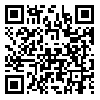Volume 71, Issue 5 (August 2013)
Tehran Univ Med J 2013, 71(5): 345-349 |
Back to browse issues page
Download citation:
BibTeX | RIS | EndNote | Medlars | ProCite | Reference Manager | RefWorks
Send citation to:



BibTeX | RIS | EndNote | Medlars | ProCite | Reference Manager | RefWorks
Send citation to:
Zareei M, Kordbacheh P, Daie Ghazvini R, Zibafar E, Geramishoar M, Borjian Borujeni Z, et al . Microscopic examination in quantifying of Malassezia yeast in scalp and rapid diagnosis of fungi invasive condition: a brief report. Tehran Univ Med J 2013; 71 (5) :345-349
URL: http://tumj.tums.ac.ir/article-1-5376-en.html
URL: http://tumj.tums.ac.ir/article-1-5376-en.html
Mahdi Zareei 
 , Parivash Kordbacheh
, Parivash Kordbacheh 
 , Roshanak Daie Ghazvini
, Roshanak Daie Ghazvini 
 , Ensieh Zibafar
, Ensieh Zibafar 
 , Mohsen Geramishoar
, Mohsen Geramishoar 
 , Zeinab Borjian Borujeni
, Zeinab Borjian Borujeni 
 , Mehdi Nazeri
, Mehdi Nazeri 
 , Leila Hossein Pour
, Leila Hossein Pour 
 , Mohammad Mirbulook Jalaly
, Mohammad Mirbulook Jalaly 
 , Seyed Jamal Hashemi *
, Seyed Jamal Hashemi * 
 1
1

 , Parivash Kordbacheh
, Parivash Kordbacheh 
 , Roshanak Daie Ghazvini
, Roshanak Daie Ghazvini 
 , Ensieh Zibafar
, Ensieh Zibafar 
 , Mohsen Geramishoar
, Mohsen Geramishoar 
 , Zeinab Borjian Borujeni
, Zeinab Borjian Borujeni 
 , Mehdi Nazeri
, Mehdi Nazeri 
 , Leila Hossein Pour
, Leila Hossein Pour 
 , Mohammad Mirbulook Jalaly
, Mohammad Mirbulook Jalaly 
 , Seyed Jamal Hashemi *
, Seyed Jamal Hashemi * 
 1
1
1- , sjhashemi@tums.ac.ir
Abstract: (12209 Views)
Background: Malassezia Species are often commensal of the human skin and scalp that opportunistically in exist of particular predisposing factors, their proliferation increases as, in dandruff and seborrheic dermatitis which both togather affect more than 50% of humans, the excess proliferation of yeast in scalp, leads to scalp-flaking and causes physical and mental disorder in peaple, spacially in youth that their health and hiar hygiene and beauty is more important for them. Thus, this survey has been done for rapid, easy and inexpensive method to diagnosis of abnormal proliferation and invasive condition of Malassezia yeast and can be more benefical for proper treatment.
Methods: Sampling with scalpel scraping from scalp of volunteer persons that had not bathed at least two day ago were done and preparation of direct microscopic slides and staining with methylene blue were accomplished. Then, survey of morpholgic characte-ristics, yeast quantification and mycelium detection were done by direct microscopic examination.
Results: From 140 scalp samples of adult persons of both gender (male and female) with different age groups, observation of malassezia yeast in 93.5% (131) were positive and 6.5% (9) were negative in direct microscopic examination. Results of yeast quanti-fication in positive cases were: mild or normal flora 25.2%, intermediate 24.5%, severe 50.3%. Detection of mycelium in positive cases were 22.9% (30) (P=0.007 df=2).
Conclusion: Application of an accessible, easy and inexpensive method and a determi-nated pattern (yeast quantification with direct microscopic examination) to distinguish normal flora from abnormal condition (excess proliferation and mycelium production) in cases of Malassezia yeasts can be more useful to rapid diagnosis of abnormal pro-liferation and invasive condition in order to initiate a proper antifungal treatment.
Methods: Sampling with scalpel scraping from scalp of volunteer persons that had not bathed at least two day ago were done and preparation of direct microscopic slides and staining with methylene blue were accomplished. Then, survey of morpholgic characte-ristics, yeast quantification and mycelium detection were done by direct microscopic examination.
Results: From 140 scalp samples of adult persons of both gender (male and female) with different age groups, observation of malassezia yeast in 93.5% (131) were positive and 6.5% (9) were negative in direct microscopic examination. Results of yeast quanti-fication in positive cases were: mild or normal flora 25.2%, intermediate 24.5%, severe 50.3%. Detection of mycelium in positive cases were 22.9% (30) (P=0.007 df=2).
Conclusion: Application of an accessible, easy and inexpensive method and a determi-nated pattern (yeast quantification with direct microscopic examination) to distinguish normal flora from abnormal condition (excess proliferation and mycelium production) in cases of Malassezia yeasts can be more useful to rapid diagnosis of abnormal pro-liferation and invasive condition in order to initiate a proper antifungal treatment.
Send email to the article author
| Rights and permissions | |
 |
This work is licensed under a Creative Commons Attribution-NonCommercial 4.0 International License. |



